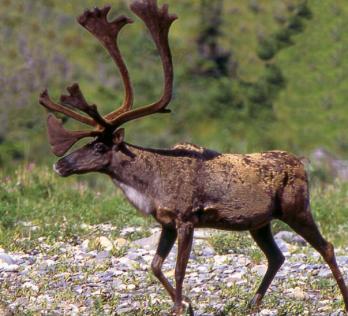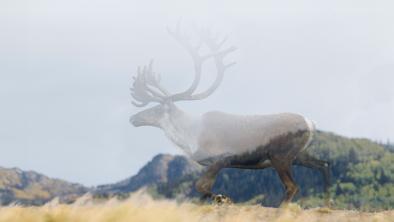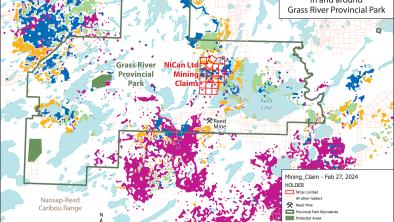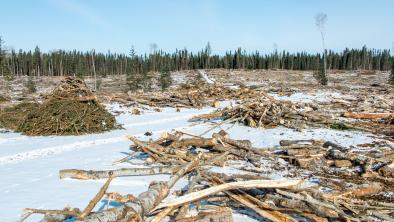Time to Speak Up for the Woodland Caribou

To Canadians, caribou are iconic, akin to the maple leaf and the beaver. For 75 years, when a Canadian reached into his or her pocket, they were likely to find a caribou gracing a 25-cent piece.
While large herds of barren-ground caribou still roam the north, their secretive forest-dwelling cousins, the boreal woodland caribou, may soon be just Canadian lore instead of part of our natural world. Like the Bluenose tall ship that graces our dime, whose days of roaming the ocean fishing and racing are long past, we may one day only be able to talk of how the caribou used to live on the land across Canada.
Boreal woodland caribou have been called the “grey ghosts” of the forest, due to their sparse numbers ranging through isolated boreal regions. They require undisturbed habitat, and shy away from developments like clearcuts, roads or seismic lines. When they give birth in spring, female caribou fan out individually to even more remote areas, in an attempt to avoid predators. This means that to thrive, caribou need big chunks of intact forest.
Because of their sensitivity to disturbance, boreal woodland caribou are in trouble in Canada. Already they’ve been pushed off half their range by developments like oil and gas exploration and logging, which is why they have been listed under Canada’s Species At Risk Act (SARA). SARA requires the federal government to establish a recovery strategy, which is a path forward to preserve caribou. Right now, the government is in the final days of accepting public comments on this strategy.
The draft federal recovery strategy for boreal woodland caribou was published last fall, and immediately drew criticism. Very simply, the government isn’t going to give caribou big chunks of intact forest, which is the critical habitat they need.
The government is also planning to simply write-off some caribou herds, allowing them to dwindle and die-off. And the government is willing to try risky experiments. Instead of giving the caribou undisturbed forests, a mass kill of wolves, and even deer, is the backbone of the government’s recovery strategy for some herds.
I for one don’t want to gamble with the future of any of the caribou herds we have left.
We need to keep caribou on all their remaining range. And I’m not alone in my desire to protect caribou. Already thousands of people have voiced their opinion to the federal government, saying they want all the caribou in Canada to be protected. Wildlife, roaming free through our forests is part of the fabric of Canada, and what Canadians envision for our country.
This is our last chance to make sure a strong strategy is put in place, so boreal woodland caribou survive in more than just Canadian lore. The single greatest thing we can do for the survival of boreal woodland caribou is to ensure they have undisturbed habitat. To give caribou the habitat they need, we need to send a strong message to the Canadian government, telling them we want caribou to thrive.
The deadline for public comment is February 22, 2012.
Please go to our letter-writing tool right now, and send your opinion to the federal government.
Eric Reder | Manitoba Campaign Director
Wilderness Committee


